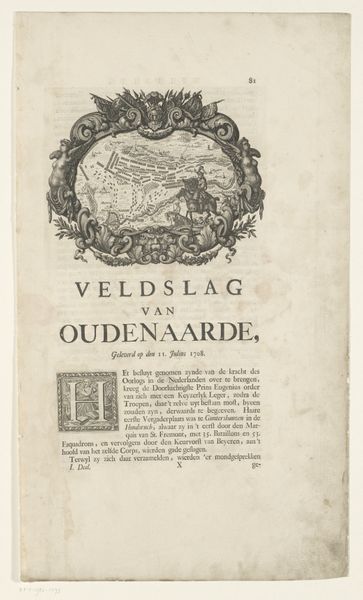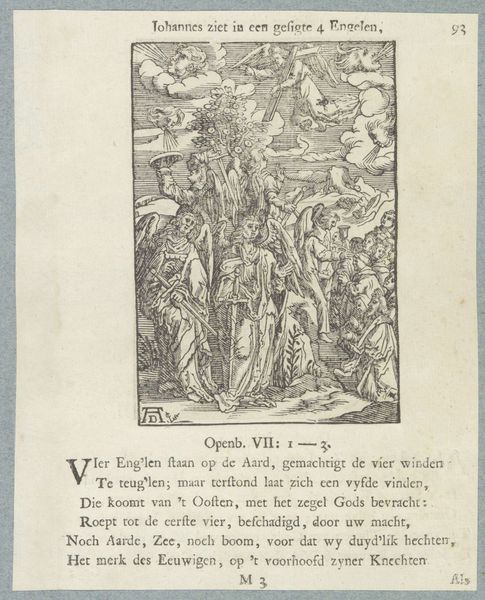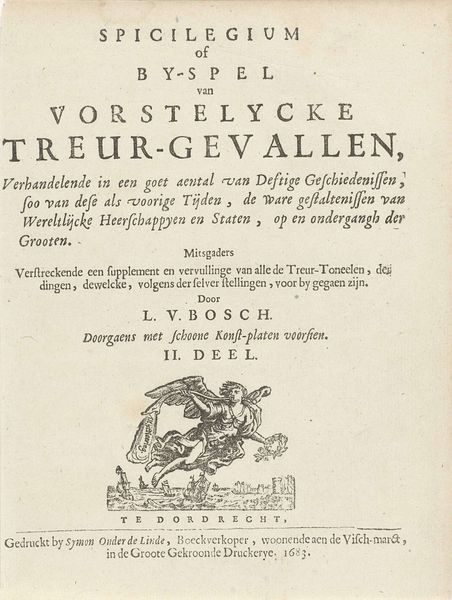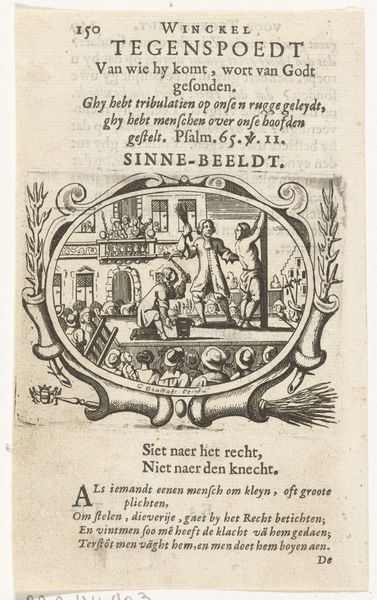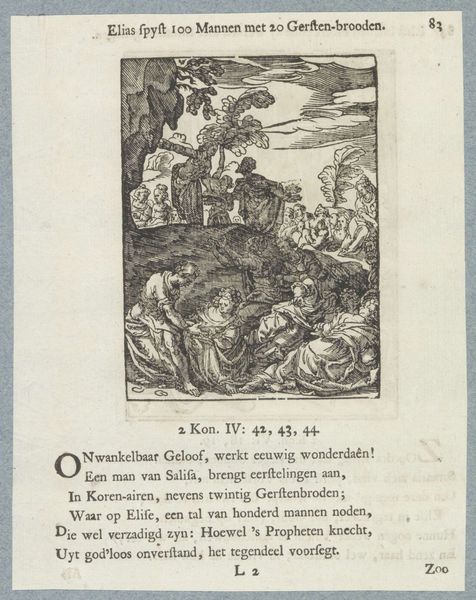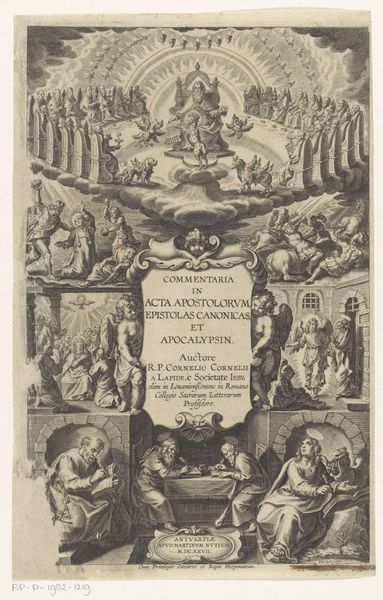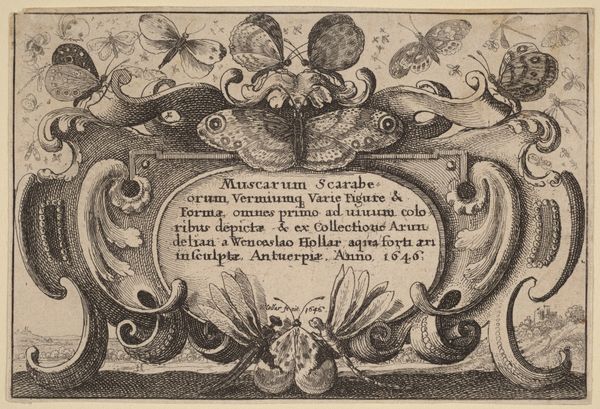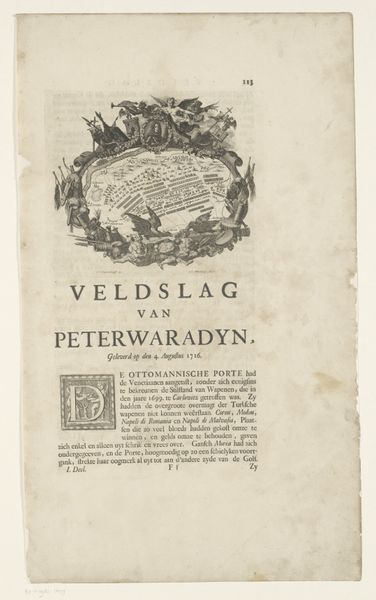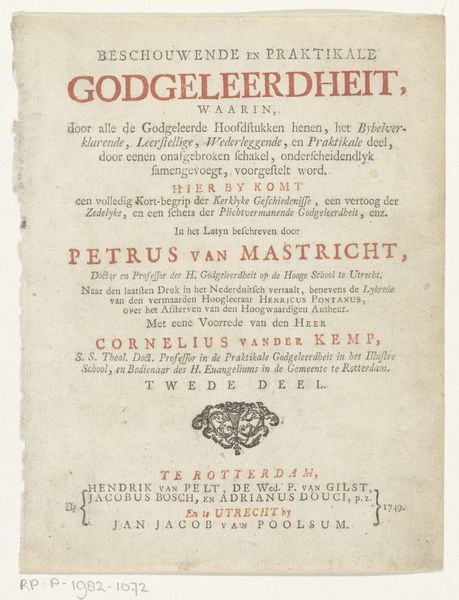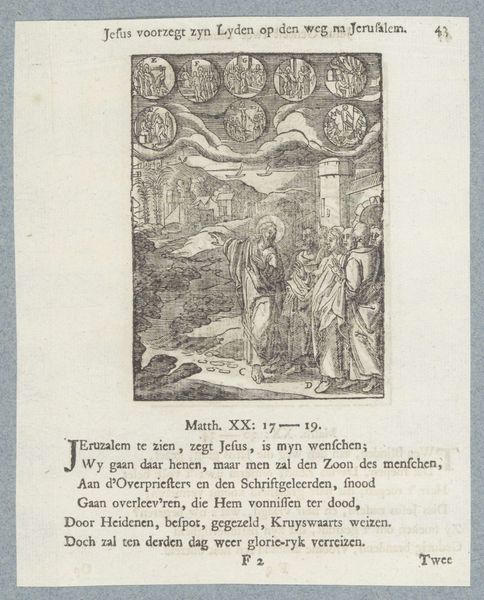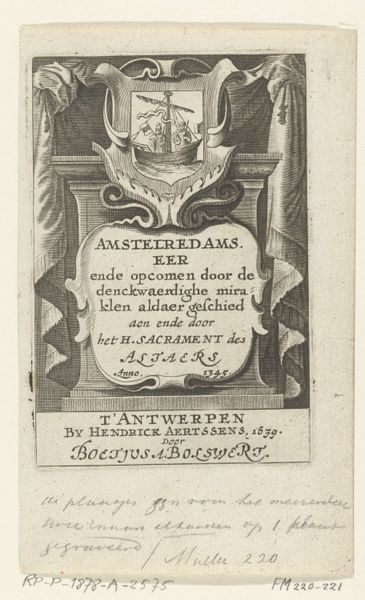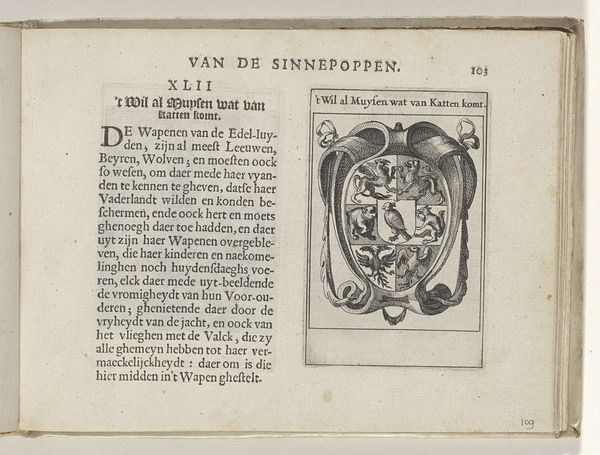
drawing, print, etching, paper, ink, engraving
#
drawing
#
allegory
#
baroque
# print
#
etching
#
figuration
#
paper
#
ink
#
line
#
engraving
Dimensions: height 105 mm, width 135 mm
Copyright: Rijks Museum: Open Domain
Editor: Here we have a 1633 print titled "Titelvignet met Cupido die een twijg ent" (Title Vignette with Cupid Grafting a Twig). It’s attributed to an anonymous artist, etched with ink on paper. I'm struck by how it seems to depict a cherubic figure enacting some sort of alchemical process… What underlying messages do you observe in it? Curator: That's an astute observation. Beyond the seemingly benign image of Cupid grafting, this work operates on a deeply symbolic level. In 17th-century Dutch society, images of marriage and family were powerful vehicles for transmitting societal values. "De twee syn een...Les deux sont vn" – "The two are one" – speaks volumes about the period's socio-political emphasis on unity and conformity within marriage. Look closely at those framed biblical scenes—what stories do they tell? Editor: I notice several scenes from the Bible. So, marriage is here connected to religious ideas of unity? Curator: Exactly! Marriage wasn't just a union of two individuals, it was a microcosm reflecting the ideal societal structure, endorsed by the church and state. Consider the implications of who controls that narrative. Where do alternative families or identities fit into such a rigid paradigm? Who benefits from this prescribed vision of unity? Editor: It's almost like the artwork is presenting an ideological argument rather than a simple scene. Curator: Precisely. These aren’t just quaint scenes. They're carefully chosen elements reinforcing a very specific—and potentially restrictive—concept of belonging and social order. By placing Cupid at the heart of this print, the artist emphasizes love’s role, or rather, society's expectation of love's role, in maintaining this order. Editor: That changes everything about how I see it. Thanks for shedding light on the layers of social commentary! Curator: Indeed. It’s a reminder that art from any period is enmeshed with, and often complicit in, power structures and prevalent ideologies. Now we can interrogate these messages critically.
Comments
No comments
Be the first to comment and join the conversation on the ultimate creative platform.
